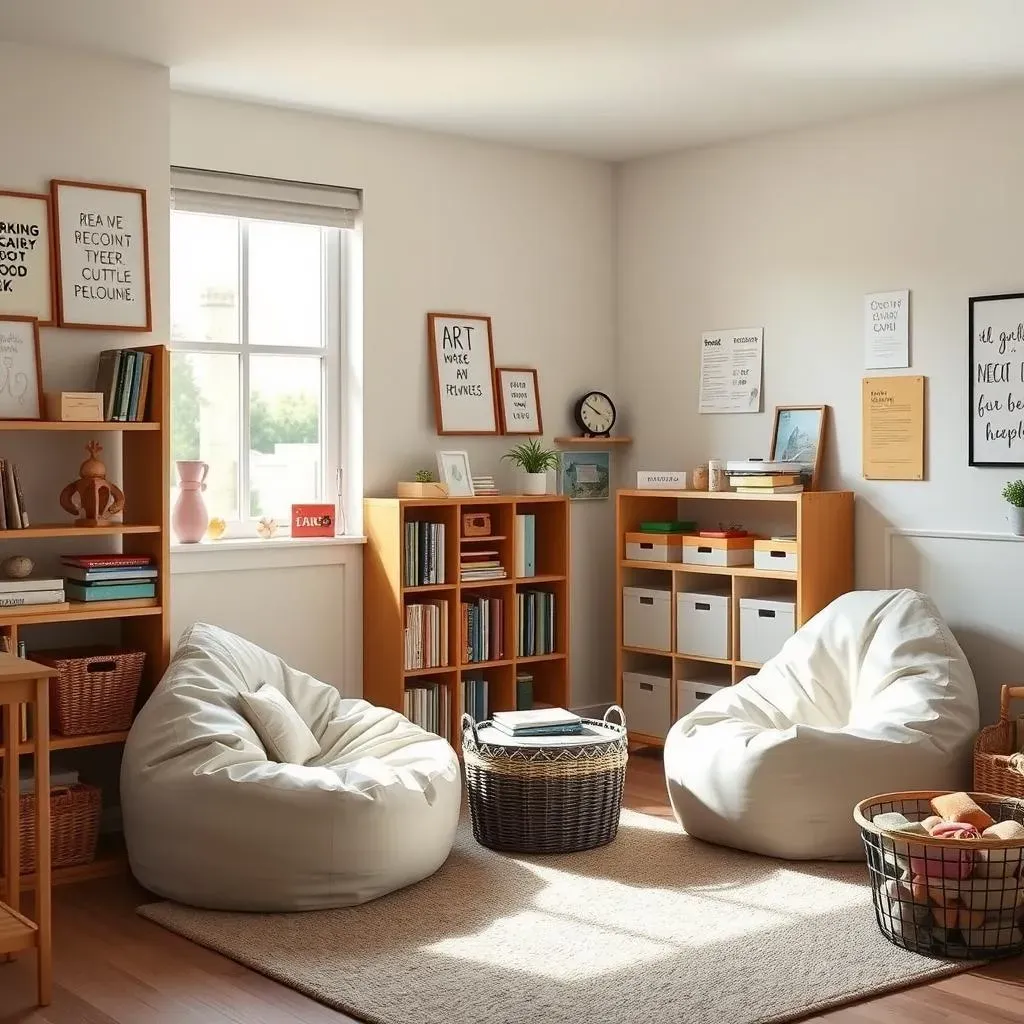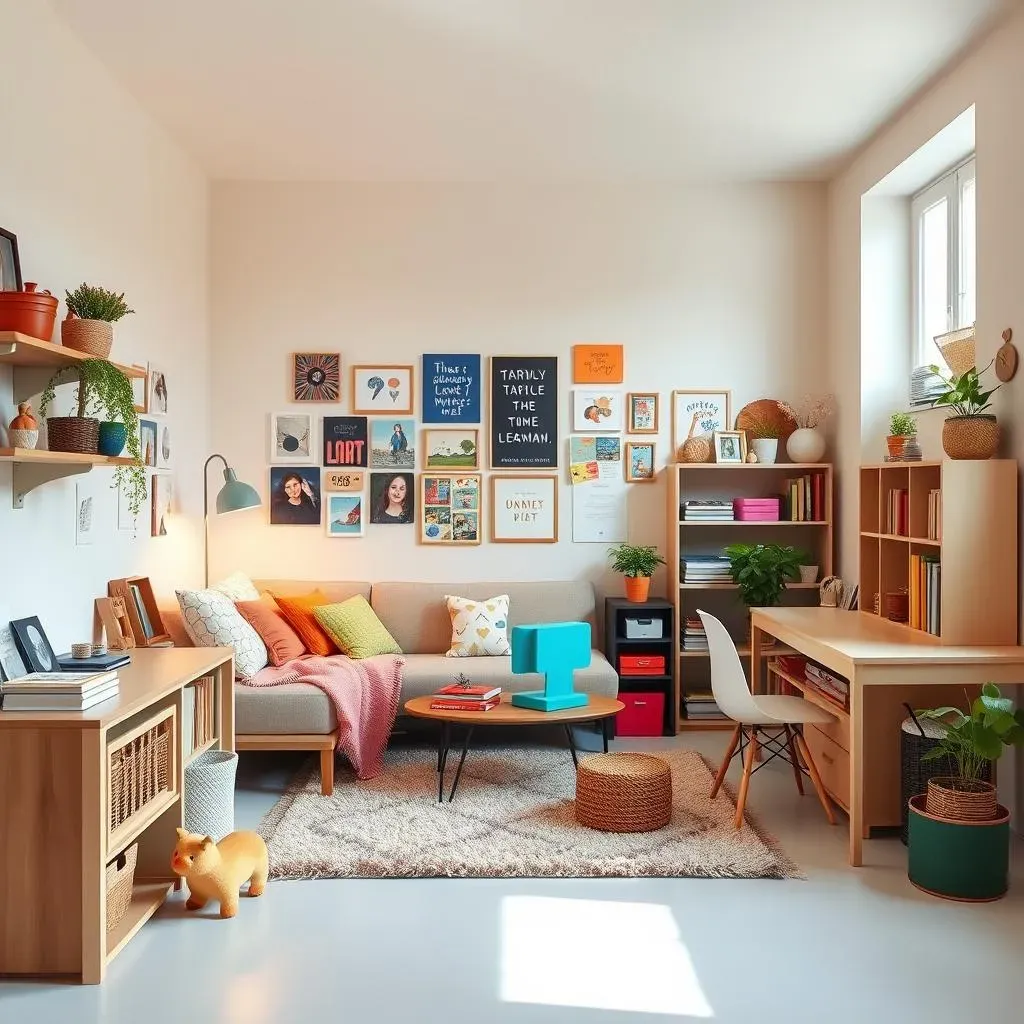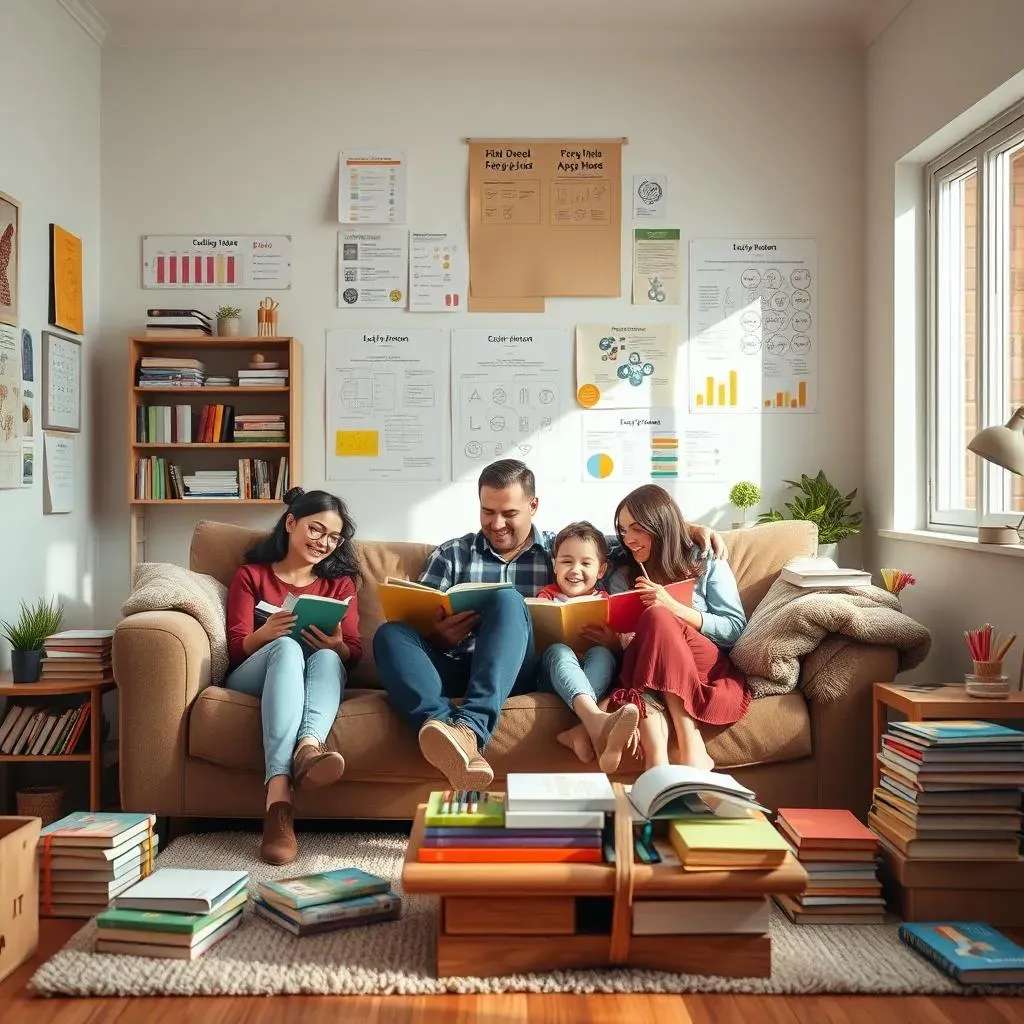Table of Contents
So, you're thinking about homeschooling, huh? Maybe you're picturing a stuffy classroom with rows of desks, but hold up! Forget that. We're talking about creating a space that's as unique as your family and as comfy as your favorite armchair. This isn't about recreating school at home; it's about crafting an environment where learning feels like a natural part of life. In this article, we'll explore some amazing homeschool classroom ideas, from simple setups to creative organization hacks. We'll look at how to use your family room, how to incorporate some Charlotte Mason magic, and most importantly, how to make a space that sparks joy and curiosity. Get ready to ditch the drab and embrace a homeschool classroom that's truly yours. Let's transform your home into a hub of learning and laughter!
Setting Up Your Homeschool Classroom: Practical Ideas
Setting Up Your Homeschool Classroom: Practical Ideas
Finding the Right Spot
so first things first: where are you actually going to do this homeschooling thing? It doesn't need to be a dedicated room, you know. Maybe it's a corner of your living room, a spare bedroom, or even the kitchen table. The key is to find a space that can be somewhat consistently used for learning. Think about it, do you need a place where you can spread out books and projects? Or would a cozy nook work better for focused reading? It all depends on your family's style and what works best for your kids.
I remember when I first started, I thought I needed a whole classroom setup. I went out and bought a bunch of school desks, which were promptly ignored in favor of the floor. Turns out, my kids learn best when they're comfortable and relaxed, so we ditched the desks and created a comfy reading corner with beanbag chairs. Don't be afraid to experiment and see what clicks with your crew. It's about making it work for you, not fitting into a pre-made mold.
Setting Up a Functional Space
Once you've picked your spot, let's make it functional. Think about the flow of the space. Is it easy to move around? Can you quickly grab the materials you need? I find it really helpful to have designated areas for different subjects. For example, a shelf for art supplies, a basket for math manipulatives, and a corner for reading. This helps keep things organized and makes it easier for the kids to find what they need without asking me every five minutes.
Also, consider lighting. Natural light is amazing for learning, so if you can, set up near a window. If that’s not possible, make sure you have good lighting to avoid eye strain. A whiteboard or chalkboard can be super useful for lessons, and don’t forget storage! Bins, baskets, and shelves are your best friends. Remember, the goal is to create a space that supports learning without being overly fussy or cluttered. It needs to work for you, not against you.
Element | Consideration |
|---|---|
Location | Dedicated room, corner, or shared space |
Functionality | Easy movement, material access, subject zones |
Lighting | Natural light or adequate artificial lighting |
Storage | Bins, baskets, shelves, and designated areas |
Organizing and Decorating Your Homeschool Space with Flair
Organizing and Decorating Your Homeschool Space with Flair
Decluttering and Organizing Like a Pro
Alright, let's talk about the fun part – making your homeschool space not only functional but also a joy to be in. Before you even think about decorations, it's time to get real about clutter. I'm telling you, a cluttered space equals a cluttered mind, and nobody needs that when they're trying to learn. So, grab some bins, baskets, and maybe even a label maker (because who doesn't love a good label?), and let's get to work. Think of it like a mini-purge. Keep what you use, ditch what you don't, and find a home for everything else. It’s not about being perfect, it's about making it work for you.
I’ve found that the key is to make it easy for the kids to help with the organization. If they can easily see where things go, they are more likely to put them away. Clear bins are your friend here. Also, don’t be afraid to rotate materials. Not everything needs to be out all the time. Put away some items and bring them back later to keep things fresh and engaging. It's like a toy rotation, but for school stuff.
Adding Personality and Color
Now that you've decluttered, let's inject some personality. Forget sterile classrooms. We're creating a space that reflects your family’s interests and passions. Think about colors, textures, and patterns that make you happy. Maybe a bright, colorful rug, some inspiring artwork, or even a gallery wall of your kids’ creations. Don't be afraid to let their personalities shine through. It’s their learning space, after all. I'm a big fan of incorporating nature into our space, so we have plants, rocks, and even a terrarium. It brings a sense of calm and wonder to the room.
Don't feel like you need to spend a fortune on decorating. Often, the best decorations are free or very inexpensive. We use a lot of things we've found in nature, like pinecones and leaves, and we always have a stack of art projects ready to display. It's all about creating a space that feels warm, inviting, and inspiring. And it's something that can evolve as your kids grow and their interests change.
Decoration | Idea |
|---|---|
Color | Choose colors that inspire and energize |
Art | Display kids' artwork or inspiring prints |
Nature | Incorporate plants, rocks, and natural elements |
Personal Touches | Add items that reflect your family's interests |
Creating a Cozy and Inviting Atmosphere
The final touch is all about making the space feel cozy and inviting. Think soft lighting, comfortable seating, and maybe even a cozy reading nook. We have a corner with a comfy chair, a basket of blankets, and a lamp, and it’s become our favorite spot for reading aloud. It's all about creating a space where the kids feel relaxed and comfortable, where they want to spend time learning. You want them to think of it as a place to explore and discover new things, not a place where they're forced to sit and learn. Remember, a happy learning environment is a productive learning environment.
I also like to add little personal touches that make the space feel special. We have a collection of our favorite books, some family photos, and even a few quirky toys that make us smile. It's the small details that often make the biggest difference in creating a space that truly feels like home. Don't be afraid to break the rules and do what feels right for your family. It's your homeschool space, after all, and it should reflect your unique style and personality.
Homeschool Classroom Ideas: Blending Learning with Home Life
Homeschool Classroom Ideas: Blending Learning with Home Life
Embracing the Flow of Home and Learning
so we've talked about setting up a physical space, but what about the actual learning? The beauty of homeschooling is that it doesn't have to be confined to a specific "school" time or area. It can, and should, weave into the fabric of your everyday life. Think about it: cooking is a science experiment, a trip to the grocery store is math in action, and reading a book together is a history lesson waiting to happen. Don't get stuck in the mindset that learning only happens when you're sitting at a desk with a textbook. We're trying to make this a lifestyle, not a chore.
I remember one day, my kids were obsessed with building forts. Instead of saying "no, we need to do math," I turned it into a lesson. We talked about shapes, angles, and structural integrity. They were learning geometry without even realizing it, and they were having a blast. It's all about being flexible and finding the teachable moments in everyday situations. That's where the real magic of homeschooling happens.
Integrating Learning into Daily Routines
Now, let's talk about practical ways to blend learning into your daily routines. Maybe start the day with a family read-aloud during breakfast. Or have a "nature walk" after lunch, using it as a chance to explore the world around you. We’ve made it a habit to always have a book or two in the car, so we can sneak in some reading time during errands. It's about making learning a seamless part of your day, not a separate activity that feels like a burden. It’s about finding the rhythm that works for your family.
Another thing we do is have “Family Project Days”. We pick a topic, whether it's a country, an animal, or a historical event, and then spend a day exploring it through art, cooking, books, and movies. It's a great way to engage everyone in the learning process, and it makes it feel more like an adventure than a lesson. Don't be afraid to get creative and experiment with different ways to integrate learning into your day. It's all about finding what works for your family's rhythm and interests.
Routine | Learning Integration |
|---|---|
Breakfast | Family read-aloud |
Afternoon | Nature walks or outdoor exploration |
Errands | Car reading or observation games |
Family Project Days | Themed learning through art, cooking, and research |
The Home as a Living Laboratory
Ultimately, your home should be a living, breathing laboratory of learning. It's not just a place to store books and art supplies; it's a place where curiosity is encouraged, questions are celebrated, and learning is an adventure. It's about creating a home where your kids feel empowered to explore, discover, and learn in a way that’s meaningful to them. Remember, this isn't about replicating a traditional classroom; it's about creating a learning environment that's unique to your family and your values. Don't be afraid to break the rules and do what feels right for your crew.
And most importantly, remember that learning is a journey, not a destination. There will be good days and bad days, moments of frustration and moments of pure joy. The key is to be flexible, adaptable, and always open to new ideas. Embrace the chaos, celebrate the small victories, and remember that you're creating a learning environment that’s tailored to your family's unique needs and interests. And that, my friend, is a beautiful thing.
Wrapping Up Your Homeschool Classroom Adventure
Creating the perfect homeschool classroom isn't about having the fanciest setup or the most expensive supplies; it's about crafting a space that works for your family and sparks a love of learning. Whether you've got a dedicated room or a cozy corner, the key is to make it your own. Embrace the chaos, experiment with different ideas, and remember that flexibility is your friend. So, go ahead, get creative, and build a homeschool classroom that's not just functional, but also a reflection of your family's unique journey. And hey, if things get messy, that's just part of the adventure!